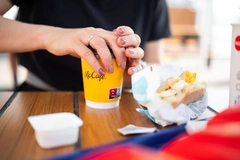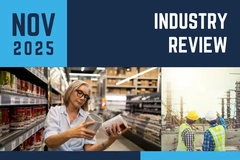
- Industry news
Industry news
- Category news
- Reports
- Key trends
- Multimedia
Multimedia
- Journal
- Events
- Suppliers
Suppliers
- Home
- Industry news
Industry news
- Category news
- Reports
- Key trends
- Multimedia
Multimedia
- Events
- Suppliers
Suppliers
US researchers develop catalyst-free process for turning plastic waste into soaps and detergents
Scientists at Virginia Tech’s Department of Chemistry, US, have discovered a method of converting certain plastics into value-added products like soaps, detergents and lubricants. The research, which spanned over five years, represents a new path for the circular economy and plastic waste management.
The study, published in the journal Nature Sustainability, focused on PE and PP, two of the most common plastic types, employing a temperature-gradient thermolysis strategy. This process breaks down plastics into hydrocarbons with tunable molar mass distributions.
The catalyst- and hydrogen-free thermolysis process generates minimal residual waste and the gas could be captured and used as fuel.
Guoliang Liu, a professor in the Department of Chemistry at Virginia Tech, tells Packaging Insights: “The temperature-gradient thermolysis process introduces a temperature filter to ensure long-chain molecules go through additional chain-scission reactions to produce the target chain-length molecules, in other words, the molar mass of the alpha-olefin products.”
Converting waste to product
The system Liu’s team developed involves two steps. In the first, plastics are placed in a custom-built reactor and heated to temperatures between 650 and 750 degrees Fahrenheit. This causes the polymers in the plastic to break down into oil, gas and residual solids. The process is fine-tuned by regulating reactor wall temperatures, as computational fluid dynamics simulations revealed this to be key to achieving specific hydrocarbon distributions.
The resulting oil, which features a high concentration of alpha-olefins, undergoes chemical functionalization to produce materials like sulfate detergents. These detergents, tested extensively in Liu’s lab, demonstrated excellent foaming behavior and emulsifying properties.
“The catalyst-free process avoids the potential problem of catalyst poisoning because plastic waste usually contains additives and contaminants such as dyes, flame retardants, plasticizers, antioxidants and even soil, food and all kinds of residues. The absence of a catalyst in this process enables the possibility of handling such dirty waste feedstocks,” says Liu.
“On the other hand, the hydrogen-free method brings two advantages. First, hydrogen is expensive and it takes a lot of energy to make it. Two, hydrogen processes typically produce saturated hydrocarbons, which have much less economic value than alpha-olefins.”
Scaling challenges
Liu explains that these materials exhibit stability. For instance, a vial of the soap has remained intact in his office for approximately a year. It is versatile and can be used for everyday tasks such as washing hands and dishes. In the laboratory, researchers have also utilized it to clean glassware.
While the research demonstrates a viable approach to recycling plastics into chemical products and improves the circularity of the anthropogenic carbon cycle and reduces dependency on fossil-based resources, scaling the process for commercial use remains a challenge. The team is optimistic but recognizes the need for further innovation and investment.
Liu estimates that the cost of testing this process would be in the range of hundreds of thousands of US dollars.
“The next steps would be a bench-top scale and then pilot-scale reactors. Capital is necessary to conduct such studies. We welcome any investors, donors and anyone’s help to conduct such scale-up studies,” he concludes.












